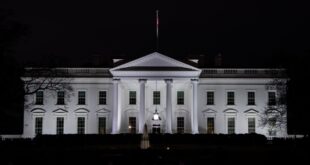The alleged Israeli mass cyber ‘terror’ attack against Hezbollah and Lebanon has further complicated the pursuit of regional stability in the Middle East and opened new frontiers in modern warfare dynamics. As per experts, cyber warfare refers to a series of tactical cyberattacks against a nation-state to disrupt, damage, or destroy critical infrastructure or take lives. It’s a novel phenomenon that encompasses a wide range of crimes, using computer systems to threaten or facilitate violence, resulting in psychological, physical, sexual, or economic harm.
On Sept. 17, the world witnessed a deadly and bizarre cyber-terror attack on Lebanon’s sovereign territory, in which hacking and simultaneously exploding a network of pager devices left at least 11 dead and over 3000 injured. Within hours, images and clips of wounded individuals—missing fingers, injured faces, and gaping wounds around the hips, where pagers are likely carried—flooded the internet, fueling debates on the nature of the attack and the future of modern warfare. In the face of the brazen attacks that killed children and injured thousands across the country, a second wave of explosions took place on Sept. 19, when several Walkie-Talkies denoted in parts of Lebanon, killing 20 people and wounding around 450.
In Lebanon, the chilling explosions occurred mainly in the southern suburbs of Beirut and the Beqaa Valley, known as a Hezbollah stronghold. Iranian Ambassador to Lebanon Mojtaba Amani, the son of a Hezbollah member of parliament, and a 10-year-old girl were among the victims. The sophisticated and deadly nature of the attack, targeting mostly Hezbollah fighters, raises suspicions about Hezbollah’s sworn enemy, Israel. Although Israel refused to comment, US officials said the attack was carried out by Israel with the intention of dismantling Hezbollah’s communication network in Lebanon.
Why does Hezbollah still use ‘Pagers’?
For sending and receiving short message alerts, pagers—also known as beepers—were popular from the 1980s to the early 2000s. Unlike cellphones, pagers operate on radio frequencies and notify the user via vibrations, audio tones, or visual displays. In Lebanon, pagers are considered a viable alternative to cellphones, as some regions face network connectivity issues, making them essential for critical communications. While pagers are still used in niche professions like healthcare, security, and emergency services, they remain popular because they are cost-effective, simple, and easy to use.
Hezbollah militants rely on pagers for communication, believing that these devices are less vulnerable to hacking compared to modern smartphones. According to reports, the AR-924 models, bearing the logo of Gold Apollo, a Taiwanese pager manufacturing company, are the devices that exploded. These devices were suspected to have been tampered with by Mossad before being sent to Lebanon. The pagers potentially contained explosives that were triggered remotely, leading to coordinated detonations across Lebanon. However, Gold Apollo issued a statement clarifying that the pagers in question were handled entirely by BAC Consulting Kft, a Hungary-based company authorized to use the Gold Apollo brand. The New York Times identified BAC as a front organization for Israeli intelligence, Mossad.
Signals of a Wider Regional Conflict
Israel has been in conflict with Hezbollah since the early 1980s. Conversely, Hezbollah has long declared its intention to drive Israel out of occupied areas in Lebanon. Although Israel officially withdrew its forces from Lebanon in 2000, Hezbollah continued to protest and launch attacks over Israel’s continued occupation of the Shebaa Farms—a small region at the intersection of Lebanon’s border with Syria—and the village of Ghajar, which Israel re-occupied after the 2006 war. In 2006, Hezbollah and Israel fought an all-out war that resulted in the creation of a buffer zone between the Litani River and the Blue Line.
Since the Israel-Hamas war began, Hezbollah and Israel have exchanged multiple offensives, causing critical infrastructure damage and civilian casualties on both sides. Israeli Prime Minister Benjamin Netanyahu has repeatedly expressed his intention to destroy Hezbollah, which operates in solidarity with Hamas. Hours before the ‘pager attack,’ Netanyahu reiterated his expanded war goals, including the return of Israeli residents who evacuated the northern region, which is vulnerable to Hezbollah’s rocket attacks.
In its initial response to the attack, Hezbollah announced plans to scientifically investigate the cause of the blasts and hinted at potential reprisal attacks on Israel. Hezbollah’s counterattacks could result in civilian casualties in Israel, prompting Israel to launch a larger-scale assault on Lebanon. A tit-for-tat approach could lead to a wider regional escalation. Hezbollah has a formidable military capability, including approximately 30,000 active fighters and up to 20,000 reserves. Since the 2006 war, the group has significantly bolstered its military strength. Hezbollah’s experience in the Syrian civil war has further enhanced its capabilities, granting access to weaponry such as T-54/-55, T-62, and T-72 main battle tanks. Additionally, Hezbollah’s operational position in southern Lebanon gives it a geographical advantage against Israel. Hezbollah is also a key player in the “axis of resistance” within Iran’s regional security framework, alongside the Houthis, Hamas, Iraqi militants, and the Syrian regime.
Recent events, such as Israel’s drone attacks on Iran, the planned assassination of Hamas leader Ismail Haniyeh on Iranian soil, and the killing of Hezbollah commander Fuad Shukr in Beirut, suggest that Israel’s continued execution of mass attacks in Lebanon could spark a full-scale regional conflict. This escalation could potentially draw other actors, such as the United States and Iran, into the conflict. Such deadly offensives could also hinder efforts toward a permanent ceasefire in Gaza, casting a grim shadow over hopes for long-term peace and stability in the Middle East.
Consequences for Global Security
Instead of calculating the prospects of a potential retaliatory attack by Hezbollah, the need of the hour is to carefully analyze where a line of demarcation can be drawn between countering terrorism and terrorizing innocent civilians in that pursuit. Moving beyond international humanitarian laws, mass ‘terror’ attacks in civilian spaces should by no means be justified in the name of countering terrorism. Countless civilian lives have been lost and widespread casualties have occurred since October last year, critical infrastructures have been dismantled, and the death toll of ‘collateral damages’ in countering terrorism continues to rise. The planning and execution of such irresponsible operations blur the line between a responsible state actor and terror-perpetrating militant organizations.
The ‘pager attack’ carried out against Lebanese civilians, which led to loss of life and widespread casualties, highlights the vulnerability of power grids and communication systems to cyber ‘terror’ attacks. As warfare undergoes a transitional shift with the indomitable advancement of technology, the use of such invisible weapons in the planning and execution of mass terror attacks by any state or non-state actors can have formidable consequences for global security.
 Geostrategic Media Political Commentary, Analysis, Security, Defense
Geostrategic Media Political Commentary, Analysis, Security, Defense





